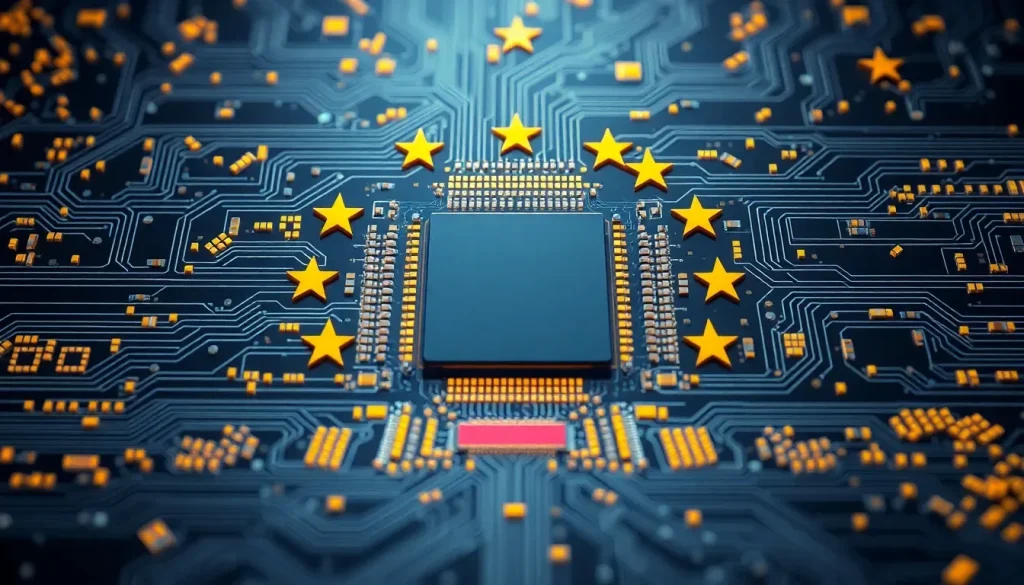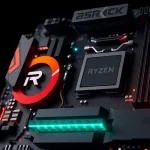EU Welcomes Chips Act 2.0 After Falling Short of Production Goals

As the digital age continues to evolve, the demand for semiconductors has skyrocketed. These tiny chips power our smartphones, laptops, gaming consoles, and even advanced artificial intelligence systems. However, the current production capacity of the semiconductor industry is struggling to keep pace with this insatiable demand. To address these challenges, the European Union is preparing to introduce the "Chips Act 2.0," aimed at bolstering its semiconductor sector and increasing investment. This article delves into the motivations behind this new legislation, its expected impact, and the broader context of the global semiconductor market.
- The EU's struggle with semiconductor production and the introduction of Chips Act 2.0
- The aims and objectives of Chips Act 2.0
- Potential for increased investment through the new legislation
- The urgency of the semiconductor challenge for Europe
- Global competition and the role of the semiconductor industry
The EU's struggle with semiconductor production and the introduction of Chips Act 2.0
The semiconductor industry is pivotal in today’s economy, serving as the backbone for a multitude of technologies. In light of this, the European Union has recognized its shortcomings in this sector. Despite the initial promises made with the first Chips Act, the EU has fallen short of its production goals, leading to the need for a revised strategy.
In 2022, the U.S. government launched its own initiative, the CHIPS and Science Act, which allocated a staggering $39 billion in subsidies primarily to major players like Intel, TSMC, and Samsung. Yet, even by 2025, this funding had not fully materialized, highlighting the complexities of such large-scale investments.
In a parallel move, the EU introduced its Chips Act in 2023, intending to allocate over €43 billion to semiconductor companies with the goal of capturing 20% of global production by 2030. However, recent findings indicate that Europe has only managed to secure 11.7% of the world's chip supply, a modest increase of just 2% from the previous year. This disheartening trend has spurred the EU to redesign its approach through the upcoming Chips Act 2.0.
The aims and objectives of Chips Act 2.0
The Chips Act 2.0 is designed to address the challenges that have hindered Europe's semiconductor ambitions. With a renewed focus on increasing financial support and enhancing research and development, the EU aims to create a robust and self-sufficient semiconductor ecosystem. Some of the key goals of this legislation include:
- Substantial investments to boost semiconductor production capabilities.
- Attracting and retaining top talent in the semiconductor industry.
- Enhancing collaboration between European firms and global semiconductor giants.
- Accelerating research initiatives to advance semiconductor technology.
This new legislative framework aims to ensure that Europe remains competitive in a rapidly evolving market dominated by countries like the United States and Taiwan.
Potential for increased investment through the new legislation
Chips Act 2.0 is expected to yield a significant increase in investment, potentially four times the current funding levels dedicated to semiconductors. This increase in investment is crucial for a variety of reasons:
- It will enable European firms to modernize their facilities and adopt cutting-edge manufacturing technologies.
- It will help build a more resilient supply chain less dependent on external sources.
- It will stimulate job creation in high-tech sectors across Europe.
Moreover, with the support of influential industry groups like SEMI, which comprises around 3,000 companies including giants like Intel and NVIDIA, the initiative is expected to garner widespread backing and facilitate the realization of its ambitious objectives.
The urgency of the semiconductor challenge for Europe
Time is of the essence for the EU as it races against the clock to meet its semiconductor production target by 2030. The urgency stems from several converging factors:
- The ongoing global chip shortage that has affected various industries, from automotive to consumer electronics.
- The geopolitical landscape that has made semiconductor supply chains more vulnerable, especially due to tensions with key suppliers.
- The rapidly growing demand for advanced technologies in artificial intelligence and machine learning.
As the EU seeks to catch up, it will need to leverage all available resources and foster an environment conducive to innovation and growth.
Global competition and the role of the semiconductor industry
The semiconductor industry is not just a matter of economic interest; it is also a matter of strategic importance for national security. Countries around the world are vying to dominate this critical sector, fostering competition that can have far-reaching implications. The EU's efforts through Chips Act 2.0 will play a crucial role in redefining its position in this global landscape.
As part of this initiative, Europe might consider establishing partnerships with technology leaders in other regions to enhance its capabilities. For example, collaboration with countries renowned for their semiconductor expertise, such as Taiwan and South Korea, could yield mutual benefits and foster innovation.
In conclusion, the Chips Act 2.0 represents a pivotal moment for the EU as it addresses the challenges facing its semiconductor industry. With strategic investments, legislative support, and collaborative efforts, Europe aims to reclaim its standing in a sector that is critical for the future of technology. The stakes are high, and the journey ahead will require resilience, innovation, and a keen focus on achieving its ambitious goals.
To gain further insights into the evolving landscape of semiconductors in Europe, you can watch this informative video:




Leave a Reply